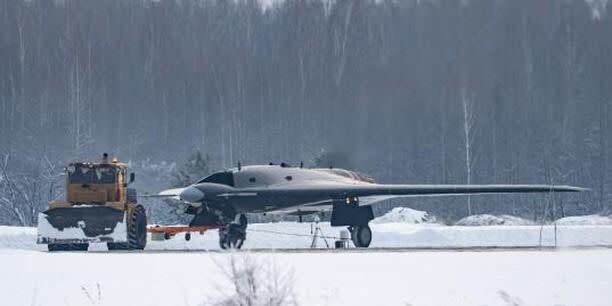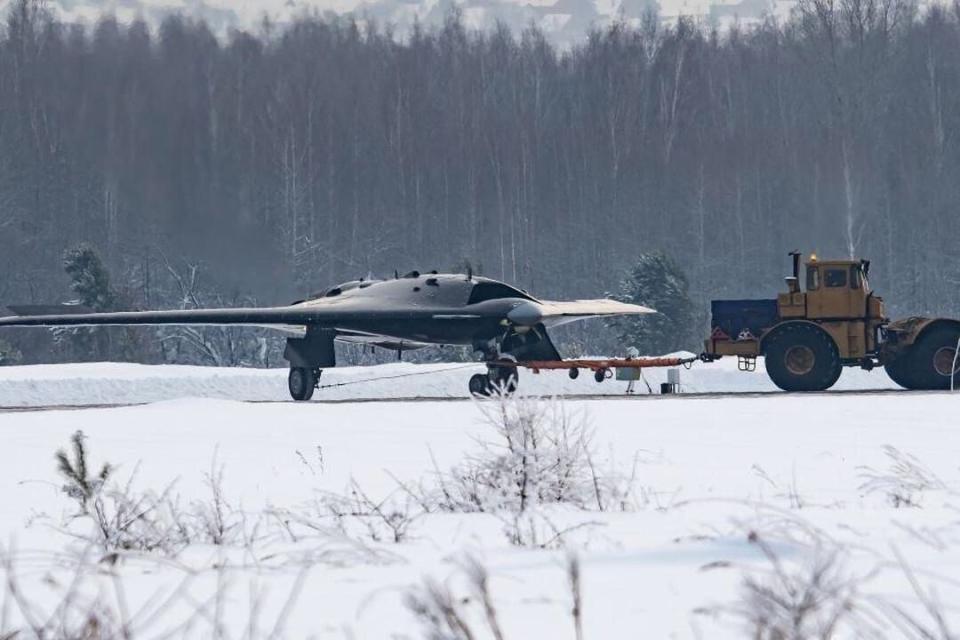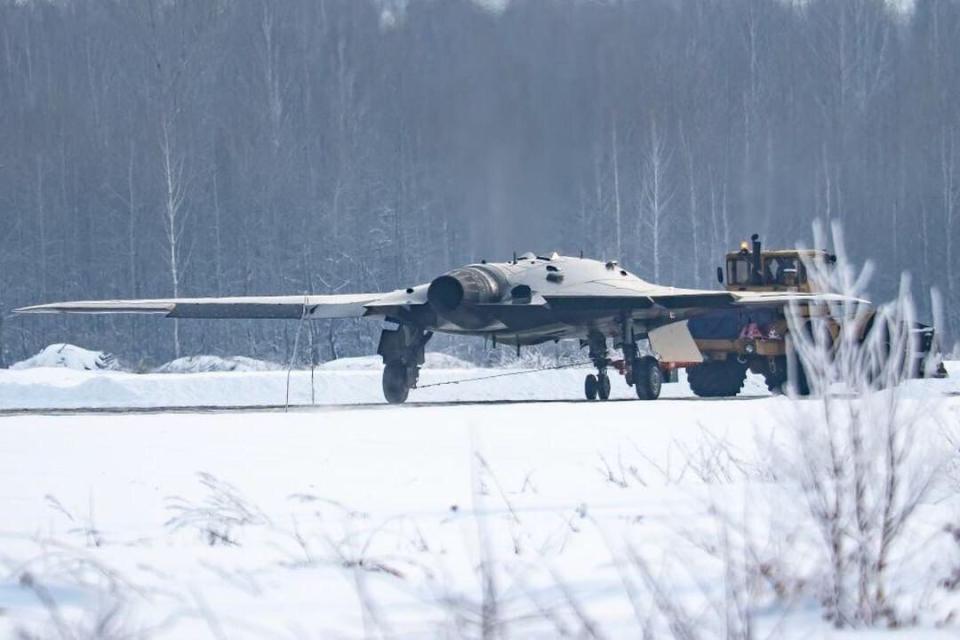This Is Russia’s First Autonomous Strike Drone

Images of what appears to be a new unmanned strike drone have emerged from Russia. The aircraft is believed to be the Sukhoi “Okhotnik” (“Hunter”) heavy strike drone, under development since 2011. Okhotnik is designed to strike targets on the ground in support of manned aircraft, destroying air defenses and headquarters units.
The images first appeared on Russian social media depicting cockpit-free, single engine flying wing aircraft. The drone clearly built for stealth but lacks certainly stealth features: It appears studded with what are likely antennas for testing purposes, and the engine nozzle is unshrouded and exposed. Ultimately Okhotnik will feature the use of composite materials and an anti-radar skin coating to further reduce its radar signature. There appears to be some heat blur behind the engine, radiating upward, to indicate the aircraft’s turbofan engine is active.

The drone is officially known as Udarno-Razvedyvatelnyi Bespilotnyi Kompleks, or “Strike-Reconnaissance Unmanned Complex.” (“Complex” is the Russian equivalent of calling a weapon or piece of equipment a “system” in the West.) Okhotnik was designed as a 20 ton combat aircraft-an impressive size considering the American F/A-18E/F Super Hornet weighs 16 tons empty and includes a cockpit and life support systems for a pilot.
The Russian government signed a development deal with the Sukhoi Design Bureau in 2011, at which time the drone was described as a “sixth generation aircraft” powered by two non-afterburning Klimov RD-33MK engines or a single Sukhoi Su-57 engine. The presence of a single engine nozzle indicates Okhotnik went the latter route. Okhotnik reportedly has a top speed of 621 miles an hour.
In July 2018, the Russian government’s TASS news bureau quoted a military aviation expert as saying, “Probably, the Okhotnik has been designed to accomplish missions similar to the assignments set for US UAVs - destroying enemy air defense systems, communications, command and control posts in situations when the use of aircraft is associated with considerable risks for crews.”

Okhotnik will be a fully autonomous drone. That is, it will be able to take off, accomplish its mission, and land without human interference. Weapons use will require human approval, maintaining a “man in the loop” who can critically analyze a combat situation and if necessary abort an attack. Okhotnik will pioneer the development of a combat artificial intelligence system that will eventually go into Russia’s sixth generation fighter.
Okhotnik development was carried out at the Novosibirsk-based Chkalov Aviation Plant, and according to Russian state media has been carrying out ground runway tests since Thanksgiving 2018. The photos made public are likely from such tests and do not in any way suggest the aircraft has actually flown yet. In November TASS reported that the next step after runway testing was “will include so-called jumps - the aircraft will briefly take off and land almost immediately. Once those trials are over, the drone will make its maiden flight.” TASS has further reported flights would begin in Spring 2019.
Russia’s military has not integrated unmanned combat aircraft into its inventory to the same extent that the U.S. has, and Russia’s drone industry is thought to be less sophisticated than those in the West. Armed U.S. drones, on the other hand, are mostly relegated to the MQ-9 Reaper and smaller aircraft using pusher turboprop engines. The first American turbofan-equipped drone designed for mainstream military use, the MQ-25 Stingray, will primarily function as an aerial refueling tanker with some intelligence collecting capabilities. In that sense, Okhotnik has no equal in the United States.
Everything we know about Okhotnik-other than the pictures-is from Russian state media and should be taken with a grain of salt. Nevertheless, there does appear to be a real combat stealth drone undergoing testing in Siberia. It’s worth remembering however that the Sukhoi Su-57 fifth generation fighter first flew in 2010 and as of 2019 is still not operational. An unmanned autonomous drone, not exactly a Russian specialty, could take just as long if not longer to develop.
('You Might Also Like',)

